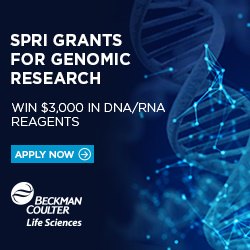The Difference Between SPRIselect and AMPure XP Reagents
The main difference between the SPRIselect and AMPure XP bead-based reagents is the intended use. The SPRIselect reagents are designed and validated for accurate and consistent DNA size selection from lot to lot, while the AMPure XP reagents are primarily validated for PCR purification and NGS cleanup.
The table below provides a detailed comparison of these reagents.
- Applications
- Nucleic Acid Input
- Output
- Storage Temperature
- Optimal Bead Ratio
- Use in NGS Library Prep Kits
- Workflow Mode
- Protocol
- Reusable

- PCR Purification, NGS Cleanup
- PCR Products, Fragmented DNA
- DNA
- 4°C
- 1.8X
- > 200 kits
- Automated or Manual
- Read →
- Yes

- DNA Size Selection,
PCR Purification, NGS Cleanup - PCR Products, Fragmented DNA
- Size Selected DNA
- Room Temperature
- Size Selection: Depends on selection point(s), Cleanup: 1.8X
- > 40 kits
- Automated or Manual
- Read →
- Yes
Identical Manual Cleanup Workflow
SPRIselect and AMPure XP reagents can be substituted for each other in DNA cleanup applications.

- Bind DNA to magnetic beads
- Separate beads from contaminants
- Wash magnetic beads with 70% ethanol to remove contaminants
- Elute DNA from magnetic beads
- Transfer to new plate
NOTE: For RNA or cDNA cleanup, use our RNAClean XP bead-based reagent, which is available in different sizes and formats to accommodate a wide range of sample volumes and throughput requirements.
Genomic SPRI Reagent Portfolio
From the Human Genome Project to today's quest for precision medicine, we've long invested in providing genomic reagents that reduce complexity and improve productivity. Our genomic reagent portfolio is powered by SPRI technology, which used paramagnetic beads to selectively bind nucleic acids by type and size to deliver high-performance isolation, purification and cleanup protocols.
Refer to the Genomic Reagent Selection Guide to find the right reagent you need to accelerate your experiments or contact us.
Products and demonstrated applications are not intended or validated for use in diagnostic procedures.



